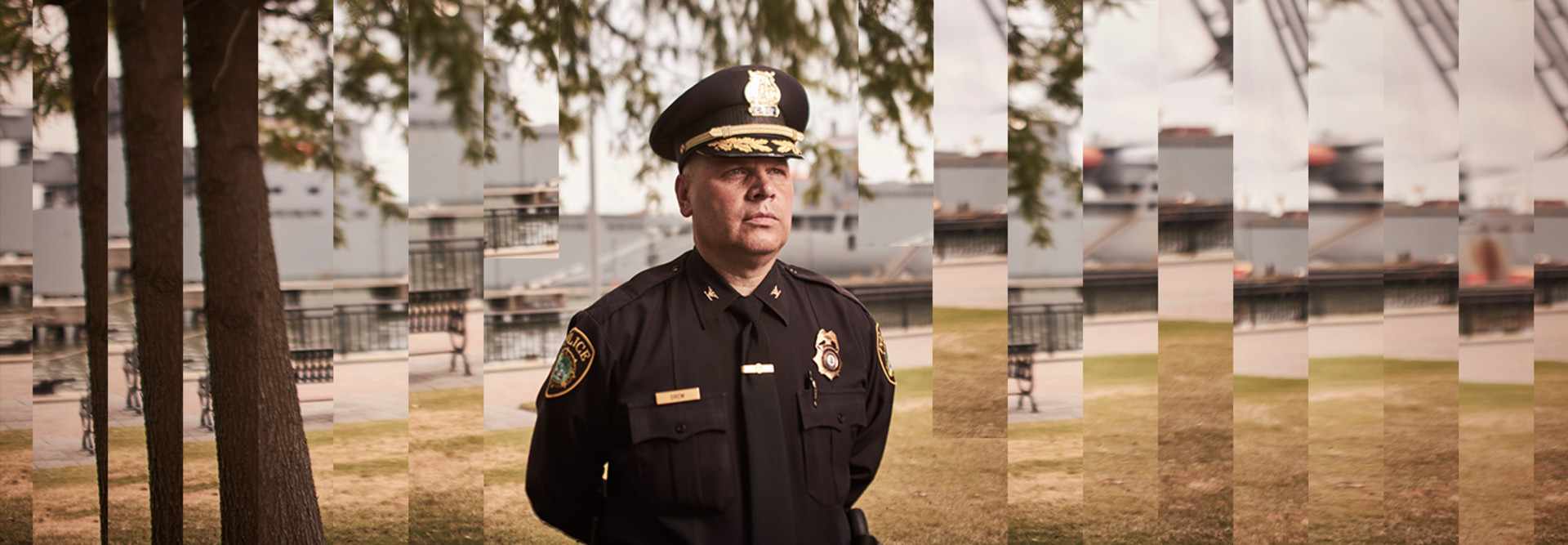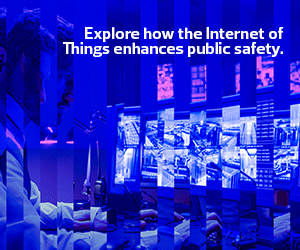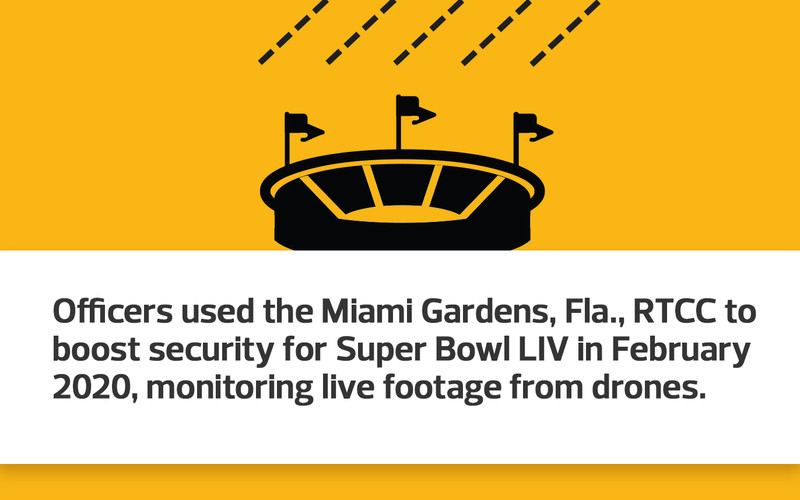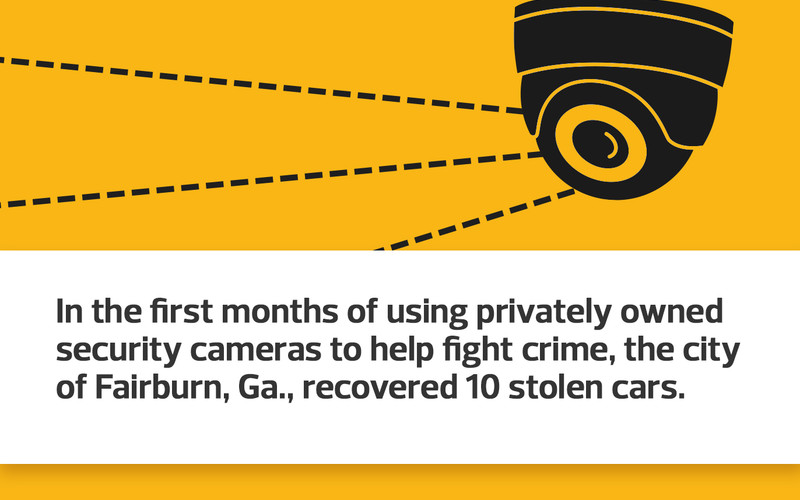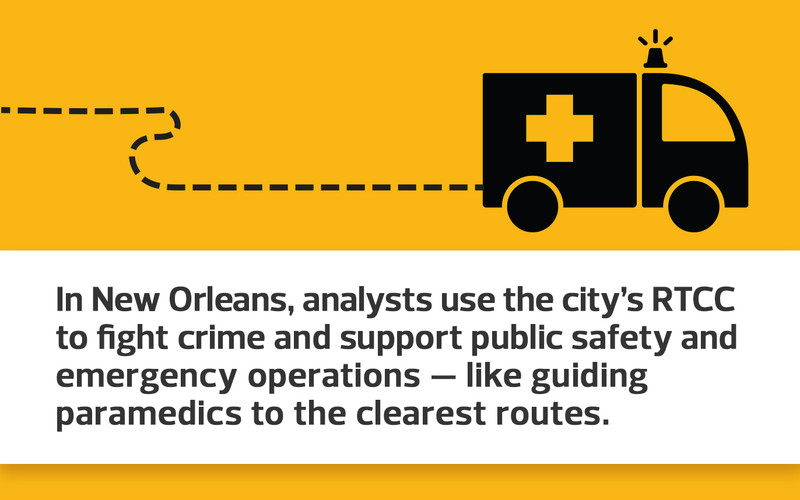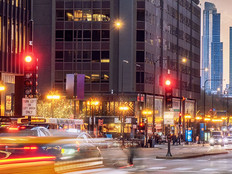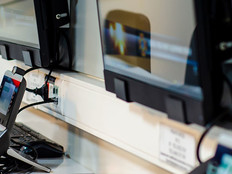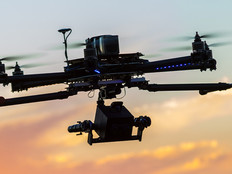After Newport News, Va., unveiled its real-time crime center (RTCC) last year, the city saw a tangible, near-immediate boost in its crime-fighting abilities, Newport News Police Department Chief Steve Drew says.
“We’ve caught homicides on video,” Drew says. “Trials that may have been hung juries become plea agreements. We had a really bad carjacking, and because of license plate readers, we were able to find that vehicle in a neighboring jurisdiction in about 90 minutes.”
“It speeds everything up,” Drew adds.
RTCCs have become an increasingly popular tool to fight crime in recent years, says Eric Piza, a professor of criminology and criminal justice at Northeastern University and subject matter expert for the Crime and Justice Research Alliance. And perhaps their primary value is the integration of various data feeds, including video surveillance, into a centralized command center, granting public safety agencies remarkable capabilities to pool resources and track threats.
Click the banner below to explore how the Internet of Things can enhance public safety on CDW.com.
There is evidence that RTCCs have positive effects, Piza says. Early findings show that these solutions work best when they’re complemented by other initiatives and when police departments invest in training and staffing to make their command centers more effective. Video surveillance is a big part of those initiatives.
“It’s a false notion to say if we put up cameras, the bad guys are going to be afraid to commit crimes,” Piza says. “Cameras that are actively monitored by human beings searching for crimes work better than cameras that are passively monitored. What really drives the success or failure of police technology is how the human beings are applying it.”
Collaborative Organizations Share Video Feeds from Across the City
Established with the assistance of CDW, the Newport News crime center incorporates video feeds from thousands of private surveillance cameras, saving the city significant money. “When other entities allow us to tap into their cameras with our software, we can use what’s already there,” Drew says.
The city also has its own cameras, along with license plate readers and the ShotSpotter gunshot detection system. While Newport News does not yet use analytics on its video footage, officials are looking into an artificial intelligence program that can automatically detect weapons.
EXPLORE: How cloud-based tools ease the burden of data collection and analysis for investigators.
Two detectives staff the RTCC for 10 hours per day. When a call comes in, those detectives can access footage from the immediate area and provide officers on the scene with information. Drew says that the system has helped Newport News to achieve one of the highest homicide case clearance rates in the state.
“We look at technology as a way to not only solve crimes but to be more surgical,” Drew says. “It is used to disrupt violent crime in communities and to try to be proactive. At the end of the day, the focus on technology is about trying to get ahead of crime and solve it. It’s not about Big Brother. It’s really about public safety.”
Capabilities to Identify Crime Through Video Makes ‘a Huge Difference’
When Newport News officials were researching RTCCs, they studied the efforts of the Charlotte-Mecklenburg Police Department in North Carolina, which has operated its own RTCC for 10 years — initially leveraging technology such as video cameras and license plate readers left in the region after the city hosted the 2012 Democratic National Convention.
“That provided us with a running start,” says Adam Keith, who manages the department’s RTCC.
By the end of this year, Keith says, the department will be receiving feeds from around 50,000 privately and publicly owned video cameras. The city itself uses cameras from Axis and Samsung — including Axis Q series and P series pan-tilt-zoom cameras, as well as Samsung Wisenet cameras — and officials are also looking into video analytics offerings such as BriefCam. The solution can automatically sift through video footage, detecting objects that cross a defined perimeter and identifying vehicles and other items of interest by searching footage for objects with similar attributes.
REVIEW: How data can help improve trust in public safety measures.
Currently, when the department receives a 911 call, RTCC detectives and analysts can zoom in on a map of the area where the incident occurred and instantly see all the nearby cameras and license plate readers. “At that point, we start clicking into cameras and try to get an eye on the scene,” Keith says.
Keith says that the robust video surveillance environment lets detectives see a “play-by-play” of incidents or their immediate aftermath. Instead of sorting out conflicting eyewitness accounts, they can immediately zero in on, say, a suspect driving a red Camaro.
“It’s very likely the suspect will still have evidence on them or will have dropped evidence between the scene and where they’re stopped,” Keith says. “Getting that red Camaro three minutes after the incident, rather than three days after the incident makes a huge difference in the case.”
Tracking Technology Aids in Rapid Recovery of Stolen Vehicles
Birmingham, Ala., also turned to CDW to establish its RTCC, which went live in October, and almost immediately an arrest was made connected to a homicide that occurred the same day.
“We were able to give detectives a description of the clothes the suspect was wearing and the vehicle he left in,” says Sgt. Christopher Thompson, one of the supervisors of the crime center. “Those are the kinds of things we would not have been able to do without the real-time crime center’s assistance.”
“Everything happens in real time, and more often than not, the suspect is not going to stand around and wait for us to get there,” Thompson adds. “Our beat officers can’t be everywhere, so we use our technology to fill in the gaps.”
DIVE DEEPER: How data portals can help law enforcement with compliance and community trust.
Birmingham’s crime center incorporates ShotSpotter, more than 500 license plate readers and more than 1,000 city housing authority security cameras. The use of footage from third-party cameras is a hallmark of RTCCs, allowing cities to maximize their coverage while minimizing their own hardware expenses.
Thompson says that the housing authority has “been wonderful” in its cooperation, and police officials are looking for ways to bring more partners on board.
Thompson says that the use of license plate readers resulted in the recovery of 37 stolen vehicles within the first year of use. Around 70 suspects have been arrested due to tips from the RTCC. Violent crime is down by around 14 percent across the city since the crime center debuted — and down 30 percent in the housing authority properties.
“It’s met my expectations 100 percent,” says Thompson. “It’s been a game changer.”



